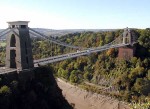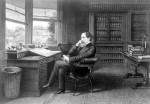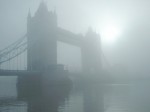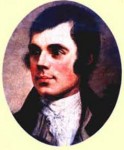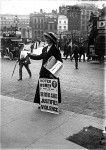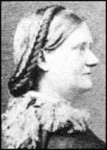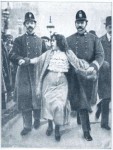Next in my series of famous genealogies is Florence Nightingale’s family tree.
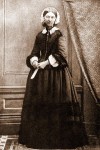 The heroine of the Crimean War, Florence Nightingale never married, and had no children. However, the Nightingale family has links with several illustrious families which are fairly well documented, so if you have any of the following surnames, it should be fairly easy to find out whether you are connected with The Lady with the Lamp.
The heroine of the Crimean War, Florence Nightingale never married, and had no children. However, the Nightingale family has links with several illustrious families which are fairly well documented, so if you have any of the following surnames, it should be fairly easy to find out whether you are connected with The Lady with the Lamp.
(By the way – if you’d like to learn how to trace you ancestry, have a look at my step-by-step beginner’s course)
Surnames connected with Florence Nightingale are: SHORE, NIGHTINGALE, CHEETHAM, EVANS, SMITH, DIGGLES, WALKER, COAPE, MOORE, PRYOR, and LUDLOW.
NIGHTINGALE
The surname Nightingale actually comes from Florence’s paternal great-grandmother’s family; her father’s name was SHORE, and he took the name NIGHTINGALE when he succeeded to his great uncle Peter Nightingale’s estates. I have come across other cases where a childless landowner passes the estate to a family member, providing they take on the family name of the testator.
 Anyone with the surname Nightingale therefore, is only likely to have a connection to Florence through the family of her great-grandmother Anne, and her brother Peter. Peter was born in 1736 in Lea, Derbyshire, the son of Peter Nightingale Esq. (1705-1763) and Anne CHEETHAM. While Peter junior did not have any children, this line can be traced back at least another century, and there could be links to this earlier line as well as the names CHEETHAM and BOWLER. Any Nightingale ancestors of the 17th century and earlier around the Derbyshire area could therefore be traced down to Florence.
Anyone with the surname Nightingale therefore, is only likely to have a connection to Florence through the family of her great-grandmother Anne, and her brother Peter. Peter was born in 1736 in Lea, Derbyshire, the son of Peter Nightingale Esq. (1705-1763) and Anne CHEETHAM. While Peter junior did not have any children, this line can be traced back at least another century, and there could be links to this earlier line as well as the names CHEETHAM and BOWLER. Any Nightingale ancestors of the 17th century and earlier around the Derbyshire area could therefore be traced down to Florence.
Florence’s only sister, Frances Parthenope, became the second wife of Harry VERNEY, 2nd Baronet in 1858, and became Lady Verney. She was a writer and essayist. However, the couple did not have any children (Harry did have children from his first marriage), and so there are no descendants.
SHORE
Florence’s father was born William Edward SHORE in 1794 in Romsey, Hampshire. He was the only son of William Shore and Mary EVANS (the niece of Peter Nightingale). William and Mary also had two daughters, one of whom died in childhood, and the other, Mary, marrying Samuel SMITH (see below). William married Samuel’s sister, Frances SMITH, and as well as Florence, they had one other daughter Frances Parthenope, but no sons. Therefore, in order to find any SHORE links to Florence, we would need to go further up the line.
William Edward’s father, William SHORE, was born in 1755 in Tapton, Derbyshire, the son of Samuel Shore and Margaret DIGGLES. Samuel and Margaret had 13 children: Robert Diggles (1736), Samuel (1738) (married Lydia FLOWER and Urith OFFLEY), Margaret, Jane (1740), Thomas, John (married Gertrude BINKS), William (1755-1822) (details above), Joshua (1748-1766), Sarah, Hannah (1754) (Married Thomas WALKER), Ann, James and Elizabeth. I am sure there must be descendants to be traced from some of these children.
EVANS
Mary EVANS was the paternal grandmother of Florence. She was born in 1760 in Cromford, Derbyshire, the daughter of George EVANS and Anne NIGHTINGALE (the sister of Peter, the mining entrepreneur who left his estate to William Edward). George and Anne were married in Ashover, Derbyshire in 1756. Because the surname is common, it is difficult to accurately trace this family, but we do know that Mary had at least one sister, Elizabeth, but I do not know if she married.
If you have any EVANS family that can be traced back to this area of Derbyshire, it may be worth checking the connections.
SMITH
Obviously, anyone with this name can have a problem tracing their name back as it is the most common name in the UK. However, this particular family have some well known and interesting people in their tree, so could be easier to trace than most.
France’s father was William SMITH MP, a well known abolitionist and social reformer, and an associate of William Wilberforce. He and his wife Frances COAPE, had at least nine children: Benjamin Leigh (1783-1860), Frances (1789-1880), William Adams (1789), Joanna Maria (1791-1884), Samuel (1794) (who married his sister-in-law, Mary SHORE), Octavius Henry (1796), Frederick Coape (1798), Julia, Anne and Patty.
His eldest son Benjamin Leigh Smith was also an MP, and had four illegitimate children by his mistress, Anne LONGDEN. One of these was Barbara Leigh Smith, who married Dr. Eugene BODICHON, and became famous as Barbara Bodichon, a leading activist in women’s rights and founder of Girton College. She was Florence’s 1st cousin. I do not believe they had any children.
Benjamin’s other children by Anne Longden were Benjamin Leigh SMITH (1828-1913), an explorer, Bella Leigh (c.1831), Anne (c.1832) and William Leigh (1833).
Benjamin Leigh Smith married Charlotte SELLER, and they had one son, Philip Leigh SMITH (1892), who married the nuclear physicist, Alice Prebil. I believe that there were children and therefore living descendants of the Leigh Smiths.
Anne Smith did not marry.
William Leigh SMITH married Georgina Mary HALLIDAY, and they had at least five children, Amy Leigh (1859), Georgina F Leigh (1862), William Leigh (1867), Bella Leigh (1879) and Sophia (1882).
I could not find a marriage for his son William Leigh, or any information for Georgina.
Bella married either a FERMOR or a WYNNE but I cannot find her in the 1911 census, so more research needs to be done here, nor can I find any further information for Sophia.
MOORE
Amy Leigh SMITH (daughter of William Leigh SMITH junior) married Sir Norman MOORE and they had 3 children: Sir Alan Hilary MOORE, 2nd Bt (1882), Ethne Philippa (1886) and Gillachrist (1894-1914).
Gillachrist was killed in action in the First World War.
Alan Hilary MOORE married Hilda Mary BURROWS, and they had 3 children. These children are still living so I will not give their names here.
PRYOR
Ethne Philippa MOORE married Lieut. Col. Walter Marlborough PRYOR. They had three sons: John Marlborough (1911-1984), Mark Gillachrist Marlborough (1915-1970) and Robert Matthew Marlborough (1917-2005). Any children of these children would be the 1st cousins 4 times removed to Florence Nightingale.
LUDLOW
Bella Leigh SMITH (daughter of Benjamin Leigh SMITH MP) married John LUDLOW in 1859. John Ludlow was a major general in the Indian Army.
They had at least three children (there may have been more): Annabel (c.1861), Henry J. (c.1862) and Milicent B. (c.1868). Bella died some time before 1881.
I have not been able to find out whether Henry J. Ludlow married or had children, but if you have LUDLOW ancestors in the Sussex area it may be worth checking to see if there is a connection.
Neither could I find any further information for Annabel.
Milicent married Sir Norman MOORE, 1st Baronet, in 1903, who had previously been married to her 1st cousin, Amy Leigh SMITH. I do not believe they had any children.
Not surprisingly, Florence Nightingale had family connections with some very interesting people, and particularly those who campaigned for people’s rights – including William Smith MP, and Barbara Leigh Bodichon (nee Smith). There are certainly living descendants of the Smith family, and there may be some from further up the line.
If you would like me to carry out any research involving a possible connection with this family, please review my services page.
Further Reading
Florence Nightingale: The Woman and Her Legend
Florence Nightingale : a biography
Florence Nightingale at First Hand: Vision, Power, Legacy



